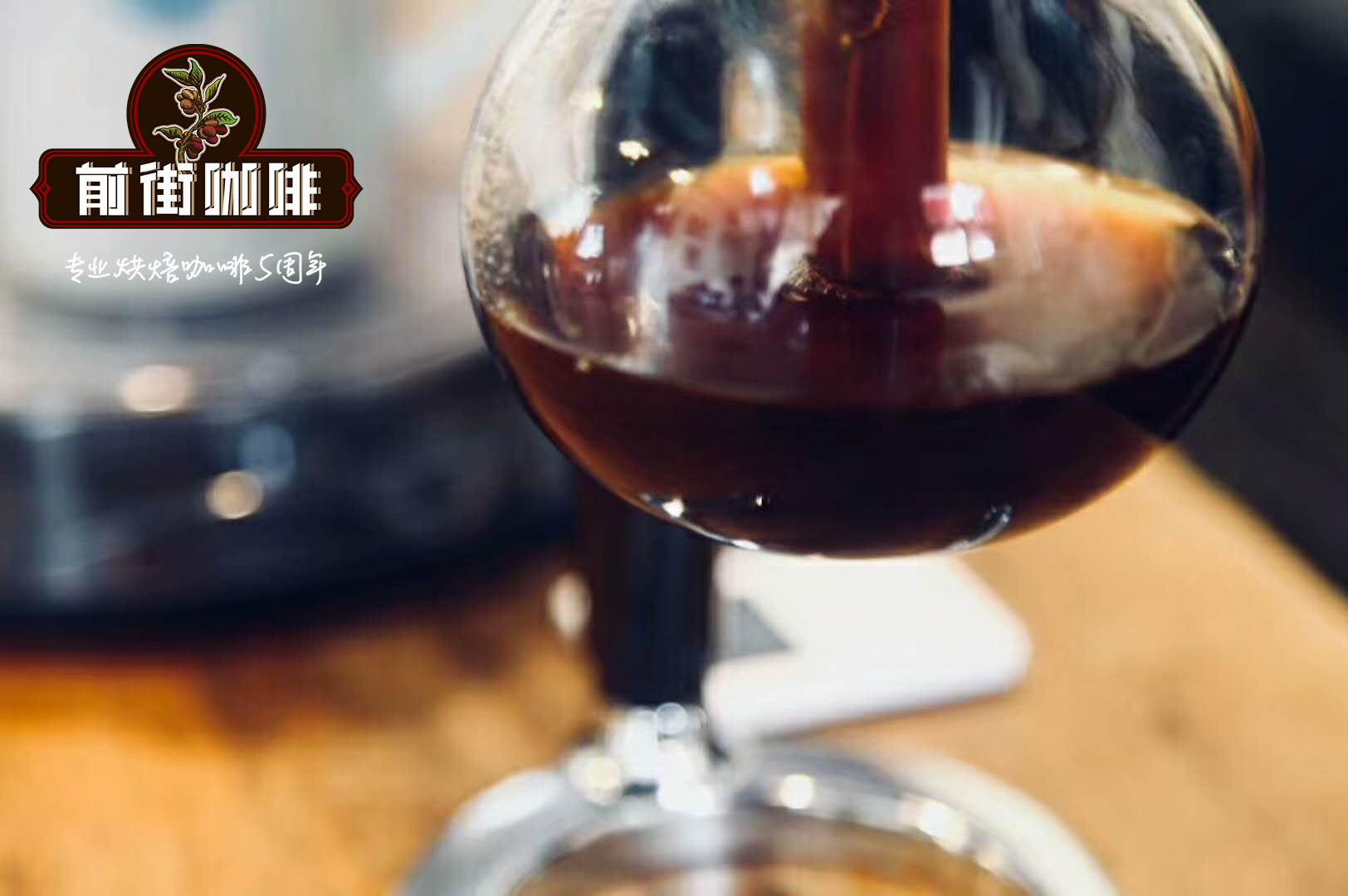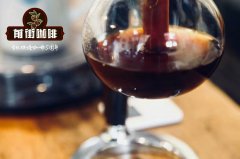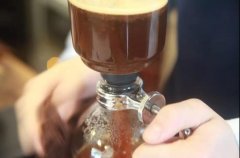How to operate siphon coffee brewed on a straight fire? What are the precautions for siphon coffee?

Professional coffee knowledge exchange more coffee bean information please follow the coffee workshop (Wechat official account cafe_style)
In 1840, a glass test tube in a laboratory triggered the invention of the siphon coffee maker (Syphon). The British took the test tube used in Biya's chemical experiment as a model to create the first vacuum coffee pot. Two years later, Mrs. Bachang of France improved the kettle with a little spring in shape, and the familiar upper and lower convection siphon pot was born.
The siphon coffee maker lived in France for a long time, but never got a good chance to be very popular.
It became popular for the first time when it was brought to Denmark and Japan in the mid-20th century.
The Japanese like the "tortoise hair" personality of the technology-based siphon coffee maker, carefully scrutinizing the complex relationship between the size of coffee powder, water and time to mobilize the whole army, and develop a well-regulated coffee path.
The aestheticist Danes focused on functional design, Peter, who imported siphon coffee pots from France in the mid-1950s. Bolton (Peter Bodum), who thought French-made pots were expensive and difficult to use, partnered with architect Kaas Klaeson to develop Bodum's first siphon coffee maker, which went public under the name "Santos".
Siphon coffee maker always has a hint of mystery in most people's impression. Siphon coffee maker plays an important role in the history of coffee development in Taiwan. In recent years, so-called ground coffee (Italian espresso) has become very popular. In comparison, this siphon coffee maker requires higher technology and more cumbersome procedures. In today's industrial and commercial society, there is a tendency to decline gradually, but the mellow flavor of coffee brewed by siphon coffee pot can not be compared with ground coffee brewed by machine.
Most people often have little knowledge of it, or even have the wrong impression, there are usually two extreme views, one is that some people are cautious and frightened about it, and what about the other? It is thought that using a siphon coffee maker is nothing more than boiling the water and stirring the coffee powder; in addition, some people think that the siphon coffee pot looks very dangerous, but as long as it is improperly used, every method of brewing coffee has hidden dangers.
Items for use of siphon coffee maker
1. Do not use detergent to clean glassware. If there is a little
The coffee oil is attached to it, and the utensils can be soaked in warm water.
Or use neutral, natural, odorless detergents.
two。 Don't use towel gourd cloth that is too rough, it will scratch the glassware.
The surface.
3. Do not heat empty glassware to cause empty burning. While the alcohol lamp is heated
When using water, please keep the outside of the lower glassware dry.
4. The filter cloth should be cleaned after each use.
Usage of siphon coffee maker
Step 1, pour hot water into the ball under the glass, bring it to a boil over high heat and wait for the water to boil.
Add 200cc when boiling one cup, 175cc when not pouring bottom water, and 350cc when boiling two cups. After pouring water, wipe the ball under the glass with a dishcloth, otherwise it is easy to break the glass.
Step 2, load the filter into the ball.
Take the filter out of the water and press it dry, hook the filter hook to the bottom of the ball, and then use the adjusting rod to adjust the filter position to the middle position.
Step 3, after the water boils, insert the upper ball into the lower ball.
Turn it into a small fire, carefully tilt the ball on the glass into the lower ball, and make sure that the water will not roll too much and spray out, press the ball on the glass slightly straight down and rotate at the same time.
Step 4, add coffee powder after the water rises by half, start stirring, and start timing after stirring.
Pour 15 grams into each cup and start stirring for the first time. Instead of stirring around, press the powder into the water from top to bottom, so that the forces in two different directions collide with each other. Don't stir for too long. Just spread the coffee powder.
Stir for the second time at step 5 and 25 seconds.
Stir for the third time in step 6 and 55 seconds, and turn off the heat in 60 seconds.
When you brew a cup of coffee in only 50 seconds (the second time in 20 seconds and the third time in 45 seconds), pull up the upper ball quickly after turning off the heat, pour out the remaining water from the lower ball, and then insert it back into the upper ball. this action is called inverted bottom water. if you don't want to do this step, the water is only 175 grams.
Step 7, wipe the ball under the glass with a wet and cold towel immediately after turning off the fire.
Step 8. When the coffee liquid is filtered to the end, pull up the ball on the glass and do not let the last coffee flow.
The siphon coffee pot is brewed over a straight fire, so the temperature at the entrance is higher than that of the rival brewing coffee, which is also its charm.
Important Notice :
前街咖啡 FrontStreet Coffee has moved to new addredd:
FrontStreet Coffee Address: 315,Donghua East Road,GuangZhou
Tel:020 38364473
- Prev

How to judge whether the firepower of siphon coffee is appropriate? Tips on making siphon coffee
Professional coffee knowledge exchange more coffee bean information Please pay attention to the coffee workshop (Wechat official account cafe_style) is obviously pure coffee, as a novice coffee, really do not know the difference between hand-brewed coffee and siphon coffee. Although everyone uses high-quality coffee to brew, but the two methods of handling and flavor are very different. Although the siphon coffee tool is fixed, it is stirred.
- Next

How to choose the ratio of flavor coffee powder to water in a siphon pot? How do you make coffee in a siphon pot?
I believe we all know that the proportion of powdered water plays a very important role in coffee. Different proportions of powdered water make the flavor of this cup of coffee different. So what kind of different flavor will be shown under the siphon kettle extracted by cooking form with different powder-water ratio? For a long time, siphon pot coffee is famous for its balanced taste and concentrated flavor.
Related
- What is the Philharmonic pressure? How to use Philharmonic pressure to make delicious coffee
- Why does a hand grinder have more fine powder than an electric grinder?
- In addition to the hot mom, what is the difference between the versions of EK43 | ditting and Mahdi ek43?
- What kind of equipment do you need to make coffee by hand? Introduction to novice starter cooking equipment tools
- Espresso needs to be ground how thick and thin scale entry Italian Coffee Machine Bean Grinder investigation and Grinding course
- How much does it cost to open a small private cafe? How much does it cost to learn coffee? How to operate it?
- The difference between the flavor characteristics of hand-brewed coffee and coffee maker is hand-brewed coffee really better than coffee maker? Can I use a coffee machine to make coffee beans by hand?
- The difference between 01 and 02 of hario v60 filter cup what is the difference between 01 and 02 filter cup opening and cooking flavor
- What's the difference between the smart cup and the French kettle? Which is better, the French kettle or the Smart Cup?
- What's the difference between a smart cup and a V60 filter cup? The difference between the taste of smart cup and hand-brewed coffee

